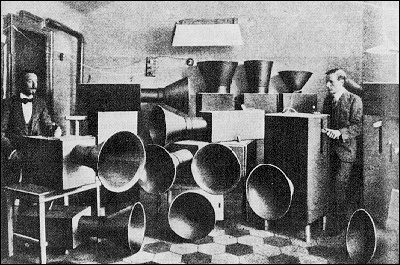Ben Frost's "By the Throat" and a Brief History of Noise
EDITOR’S NOTE: We’re pleased to introduce Steen Comer, a writer, video artist, art coder, and all-purpose memetic engineer. He is currently in the Bay Area, geographically speaking, although he frequently makes trips to parallel universes for research purposes. Steen is easily found by looking just about anywhere for “mediapathic”.
Depending on your personal experience, the idea of “noise music” could be considered a contradiction in terms. Within what we winkingly refer to as “The Western Musical Tradition”, “noise” is considered something to be avoided, something that detracts from the experience of the music as the artist intended. But readers of Coilhouse know that this is an idea as outdated as the notion that “the artist” is a monolithic Wagner working in a vacuum. We no longer listen to music in opera houses with perfectly tuned acoustics, we listen in crappy white earbuds that we have cranked up to try to cover the traffic noise.
And, in fact, we never did have the perfectly tuned theatre; that was always a Platonic ideal of acoustic experience; it never really existed. Artists like Cage and Stockhausen knew this, of course, and intentionally and explicitly dealt with it. Industrial music, of course, took this idea and ran with it, as a part of its program of total deconstruction of control systems. Many reading this will have at least attempted to listen to music by Einstürzende Neubauten, often considered the godfathers of industrial noise. If that song happened to be “Let’s do it a Dada” off of Alles Wieder Offen, you heard Blixa extend a friendly nod to “Signore Russolo”.

Luigi Russolo’s Intonarumori.
That would be Luigi Russolo, who wrote a Futurist manifesto that suggested using elements of the urban landscape in music, including “Screeching, Creaking, Rustling, Buzzing, Crackling, Scraping….” This was in 1913. The thread is long and tangled, and continues to this day.
Beyond the world of music, though, there’s a growing awareness of error as form. The Glitch Art movement is most obvious example of this, where artists are using procedural techniques to add intentional errors to images and video. Generally the results look kind of 8 bit and pixelated, because, well, most digital art is made of pixels…


